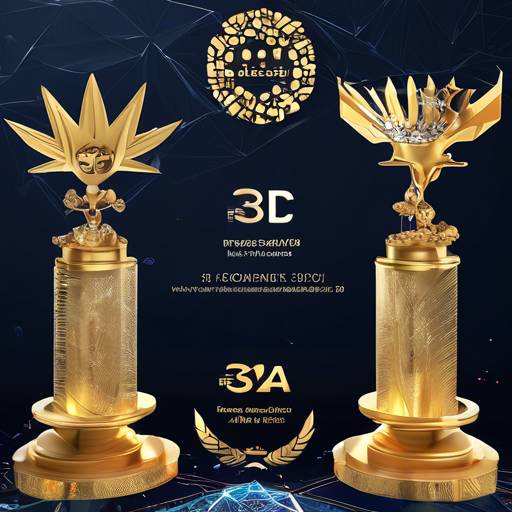Is Ethereum on the Verge of Overtaking Bitcoin in Market Cap?
Bitcoin (BTC) and Ethereum (ETH) are the two giants of the crypto market, together accounting for nearly 70% of its total market cap. While Bitcoin has established itself as a global financial asset, Ethereum’s blockchain technology has enabled a diverse ecosystem of decentralized applications (dapps). As Ethereum’s market cap approaches $370 billion, speculation about a potential event known as “the flippening” – where Ethereum surpasses Bitcoin in market cap – has grown.
BTC vs ETH: Market Cap and Dominance
Bitcoin has dominated the crypto market since its inception in 2009, with its market cap consistently outstripping its competitors. Starting at just $1 million in early 2011, Bitcoin’s market cap reached $1 billion by early 2013 and soared to over $9 billion by the end of that year. The year 2017 was pivotal for Bitcoin, as its market cap surpassed $300 billion for the first time.
In contrast, Ethereum followed a more gradual trajectory. Despite its modest beginnings in 2015, Ethereum quickly rose among the top five cryptocurrencies by market cap. By December 2017, Ethereum’s market cap had surged to $73 billion from just $60 million two years prior. This growth significantly narrowed the ratio between Bitcoin and Ethereum’s market caps to 3.25:1.
The concept of “Bitcoin dominance” emerged as a crucial metric for assessing the dynamics within the crypto space. Initially exceeding 90%, Bitcoin’s dominance dwindled to below 45% by December 2017 as altcoins gained traction. As of February 25, the ratio stood at approximately 2.75:1.
Real-World Contributions of Bitcoin and Ethereum
Bitcoin’s Expanding Ecosystem
Bitcoin has witnessed strong growth in its ecosystem, particularly with the introduction of new technologies and platforms. The launch of spot Bitcoin ETFs in January 2024 is expected to enhance Bitcoin’s accessibility and appeal, solidifying its position in global finance. Bitcoin’s use cases have expanded through the Stacks (STX) blockchain, which enables smart contracts, defi applications, NFTs, and apps directly on Bitcoin.
Ordinals, introduced in January 2023, have added a new dimension to Bitcoin’s use cases by allowing information to be attached directly to individual satoshis. This innovation has enabled the creation of Bitcoin-native NFTs, marking a crucial evolution in Bitcoin’s functionality beyond its original scope as a digital currency. Additionally, Bitcoin has gained significant adoption in Emerging and Developing Economies (EMDEs) as an investment and hedge against currency depreciation.
Ethereum’s Diverse Utility
Ethereum has been a frontrunner in facilitating a wide range of dapps, defi platforms, and NFTs due to its smart contract capabilities. Ethereum’s established standards, like ERC-721 and Ethscriptions, have made it the go-to platform for NFT creation and trading. Moreover, Ethereum dominates the defi sector with a total value locked (TVL) of around $48 billion.
Ethereum has also emerged as the most used blockchain for the tokenization of real-world assets. Tokenization involves converting rights to an asset into a digital token on the Ethereum blockchain, enhancing liquidity and accessibility. Citi predicts that tokenization could become a $4 trillion market by 2030.
Can Ethereum Overtake Bitcoin in the Long Run?
While Bitcoin is often regarded as digital gold, Ethereum’s utility extends beyond financial transactions. Goldman Sachs highlights Ethereum’s substantial “real use potential” due to its foundational role in running applications like defi protocols. Jim Cramer of “Mad Money” also supports Ethereum, citing its prevalent use in purchasing NFTs and other digital assets.
Forecasts by Cathie Wood of Ark Invest project a future where Ethereum reaches a market cap of $20 trillion by 2030, while Bitcoin’s price reaches $1 million. Such predictions suggest that Ethereum’s broad utility could redefine its position relative to Bitcoin.
The Road Ahead
Both Bitcoin and Ethereum are likely to coexist and thrive, serving unique purposes within the crypto market. While Ethereum’s potential to overtake Bitcoin in market cap reflects its expansive utility and growing demand, Bitcoin’s entrenched status as digital gold ensures its continued relevance and resilience.
As these platforms adapt to emerging challenges and opportunities, they will play a pivotal role in redefining money and commerce in the digital age.
Hot Take: The Battle for Crypto Supremacy Continues
The race between Bitcoin and Ethereum for crypto supremacy is far from over. While Bitcoin has established itself as the leading cryptocurrency, Ethereum’s technological advancements and diverse utility have propelled it into the spotlight. As the market cap gap between the two narrows, the possibility of Ethereum surpassing Bitcoin cannot be ignored. However, both cryptocurrencies have their unique strengths and will continue to shape the future of finance and technology. Stay tuned for more exciting developments in this ongoing battle!





 By
By

 By
By

 By
By